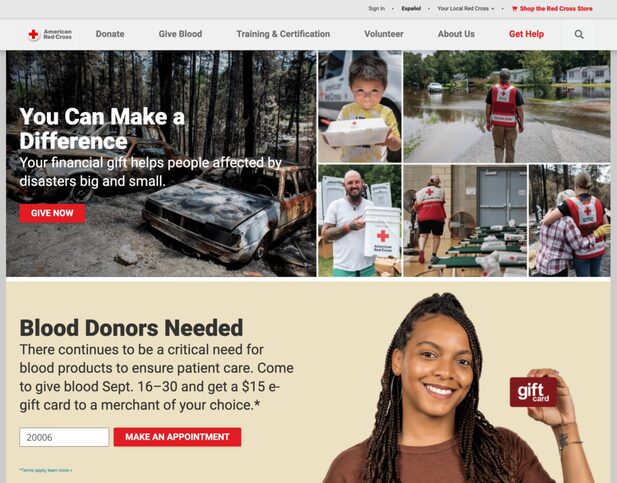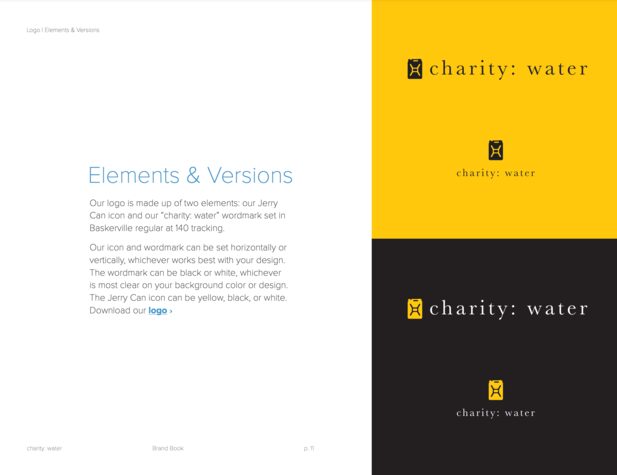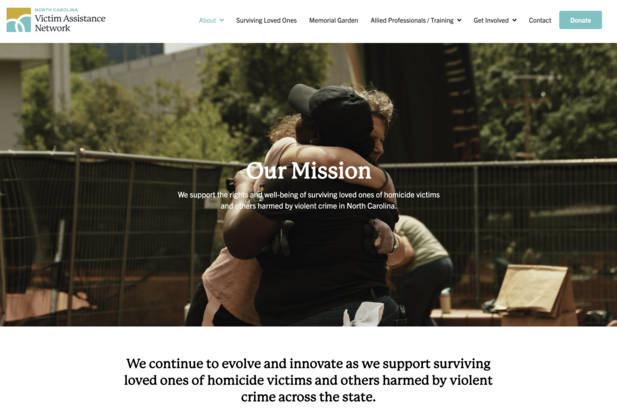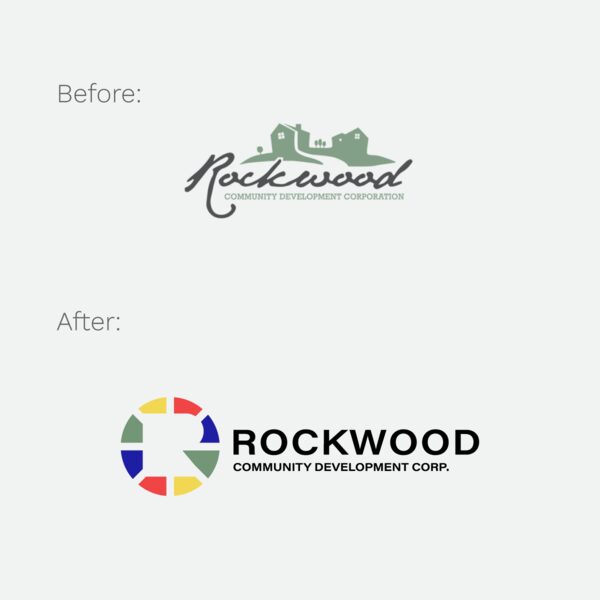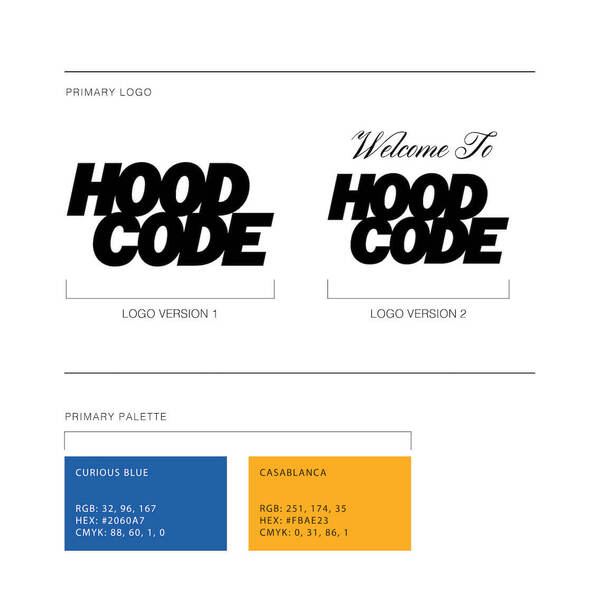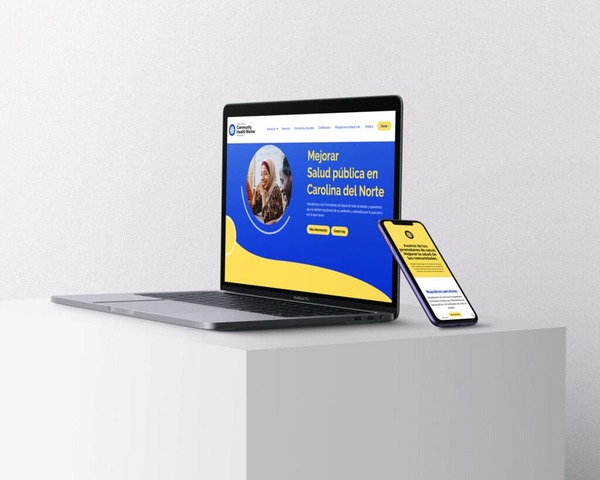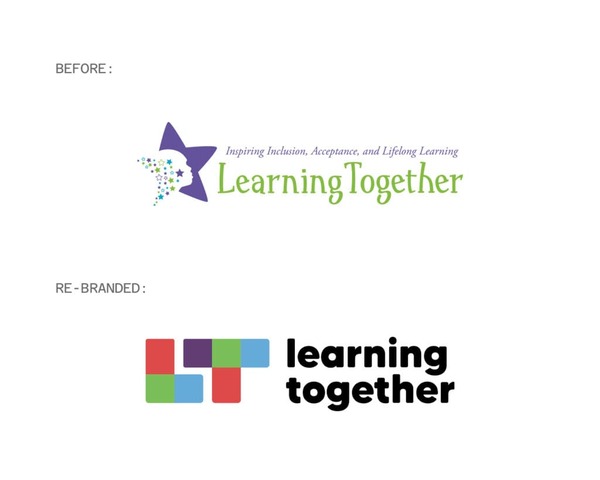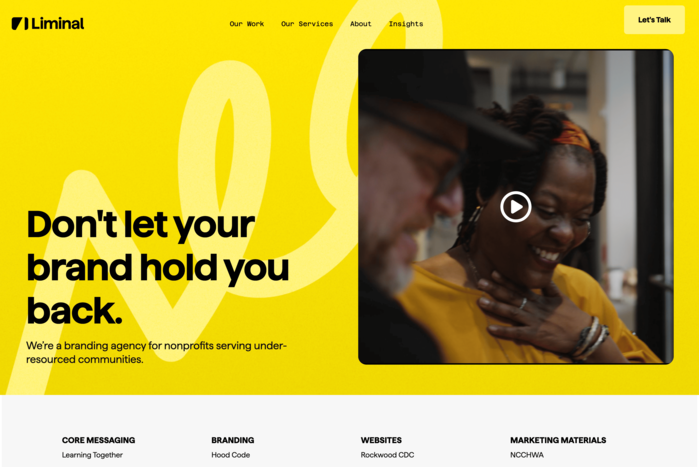Insights
Nonprofit Branding 101: An In-Depth Guide + Top Examples
When a donor comes across your nonprofit’s website or one of your social media posts, what do they think?
No, you don’t have to be a mind reader—but you do need to understand how people perceive your organization, its identity, and the work that you do. In today’s noisy, distraction-filled world, you don’t want your nonprofit to be just a passing face in the crowd. Your long-term success depends on donors recognizing, remembering, and responding to your mission.
That’s where nonprofit branding comes in. In this complete guide, we’ll cover the fundamentals and explore how you can turn your nonprofit’s branding strategy into a powerful platform for connecting with donors and elevating your work. Here’s what we’ll discuss:
- Branding for Nonprofits: FAQs
- Building Blocks of a Strong Nonprofit Brand
- How to Create a Nonprofit Branding Strategy
- Top Nonprofit Branding Examples
- How a Nonprofit Branding Agency Can Help
Your brand is more than a catchy name and logo. By understanding and clarifying all aspects of your brand identity, you can rally your staff, board, donors, and community partners into a strong, unified force that fuels your impact more than ever.
Branding for Nonprofits: FAQs
Ready to inspire more support with your nonprofit’s branding? Before you start, let’s review some frequently asked questions to get your team on the same page.
What Is Nonprofit Branding?
Nonprofit branding is a nonprofit’s visual and verbal identity, reflecting the organization’s purpose, how it communicates its work, and its reputation. It represents the experience people have when they interact with the nonprofit and the lasting impression they’re left with. A compelling brand identity is what makes an organization stand out and linger in the minds of those who come across it.
A well-known example of strong nonprofit branding is the Red Cross. When people see its logo, the red cross on a white background, many automatically think of the emergency support and humanitarian aid that the organization provides. The website displays the same red and white prominently and consistently, while the website’s messaging incorporates the tones of voice specified in its brand guidelines: uplifting, empowering, inviting, and personal.
However, once you’ve established your nonprofit’s brand identity, this doesn’t mean there’s no going back. It’s not like placing your handprint in wet concrete—many organizations undergo rebranding projects to improve or completely reimagine their brands, and an effective rebranding process can do wonders for their public perception and credibility.
Why Is Branding Important for Nonprofits?
A nonprofit’s branding is the cornerstone of everything it does. It shapes how you connect with donors, carry out your mission, and report your impact. Taking the time to develop a distinctive, compelling brand allows you to:
- Build trust and credibility. A well-defined brand demonstrates that your nonprofit is committed to producing high-quality results and takes its work seriously. Donors will feel confident that you’ll actually be able to fulfill your promises and turn their contributions into meaningful change.
- Create alignment. A solid nonprofit branding strategy articulates a clear vision and values that resonate with your team members, donors, and other stakeholders. It builds a sense of community and promotes collaboration by uniting everyone behind a shared purpose.
- Raise more funds. By differentiating your nonprofit from others in the sector, you can attract more attention to your programs, services, and fundraising efforts. Donors will immediately understand how they can make an impact and how you’ll put their dollars to good use. In fact, custom-branded donation pages on a nonprofit’s website raise six times more than unbranded, third-party ones.
- Inspire engagement. 93% of nonprofits believe a strong brand identity improves donor engagement, and 68% indicate that a compelling visual brand boosts volunteer interest. When you convey your story and explain your work with clarity and consistency, you help donors feel like active participants in your impact. As a result, they’ll be more inspired to give, volunteer, and spread the word about your nonprofit.
- Navigate change. As your nonprofit experiences internal and external changes, your team and leadership might run into periods of uncertainty or doubt. Reinforcing your nonprofit’s identity allows you to stay the course and maintain momentum toward your goals. You’ll know what’s important to your organization and how to keep those priorities at the forefront of your new strategies and approaches.
Ultimately, your nonprofit’s brand is the foundation upon which your mission and work are built. By enhancing your branding, you can boost your visibility, credibility, and reputation to unlock new opportunities for expanding your impact.
When Should a Nonprofit Rebrand?
A nonprofit rebrand, or brand refresh, is the process of improving your existing brand identity or reinventing it on a larger scale. As your organization progresses and matures in its mission, there may come a time when you need to reassess your branding strategy to ensure that it still captures the heart of what you do.
Your nonprofit should consider rebranding if your current brand identity:
- No longer accurately reflects your current mission priorities, programs, or services.
- Does not capture the entirety of your work and impact.
- Is inaccessible to the general population, with messaging full of jargon.
- Is not consistent enough to be memorable or inspire support.
- Fails to connect with people on a personal, emotional level.
Effective branding shines a spotlight on your nonprofit, demonstrating your potential to make a real impact on the world. A recent survey found that around half of nonprofits that rebranded experienced a revenue increase in the immediate years after.
6 Building Blocks of a Strong Nonprofit Brand
If you ask someone to describe their own identity, they might discuss their personality, appearance, interests, habits, and career. An identity is many parts of a whole, and it takes understanding each part to know exactly who you are and how others see you. When it comes to outlining your nonprofit’s brand identity, there are several key elements you need to establish.
Name
It can be challenging to boil your nonprofit’s mission down into a single statement, let alone a few words. With a (roughly) estimated one million words in the English language, creating a name for your nonprofit that is memorable, reflective of your work, and resonant with your audience can seem a little overwhelming.
However, many nonprofits can and have settled on a clear, inspiring name for their organization. Take Gen KIND, for example. The nonprofit, which hosts projects and campaigns that support America’s youth, chose a name that reflects its focus on generosity and the next generation. The name is short, memorable, and compassionate, helping potential donors understand exactly what the organization stands for and how they can make a difference.
While you probably already have a name that your community knows you by, it’s entirely possible to change your name as part of your rebranding process.
Logo
Your nonprofit’s logo is a visual portrayal of your brand identity, including your name and color scheme. It should be a symbolic representation of your mission, work, and impact without confusing your audience with too many details or distractions. Helping Education’s logo, for example, is a green apple beside its name—simple, focused, and easy to recognize.
While you should feature your logo consistently across your website, social media posts, and other collateral, you can create variations that slightly rearrange the design to fit better in different placements. The charity: water Brand Book includes horizontal and vertical configurations of the nonprofit’s name and icon and specifies that using the Jerry Can icon alone is also acceptable.
Core Messaging
Your nonprofit needs a core messaging document to ensure that all of your internal and external content is clear, consistent, and compelling. Since every donor relationship starts with introducing them to your organization, condensing your complex work into easy-to-understand messaging ensures that this introduction is as smooth and engaging as possible.
Key components of your core messaging include your:
- “Why” statement
- Vision statement
- Mission statement
- Core values
- Tagline
- Problem and solution statements
- Target audience
- Calls to action
- Narrative
- Elevator pitch
NCVAN’s “About” page provides an outstanding example of a nonprofit that has its core messaging down, confidently sharing the organization’s mission, history, and core values.
Voice and Personality
Defining a clear brand voice and personality is key to nurturing loyal, lasting relationships with donors. The more consistent you are in your donor communications and interactions, the more connected they’ll feel to your identity as a whole. Essentially, this element of nonprofit branding comes down to this question: If your nonprofit were a single person, what would it be like?
According to the Nonprofit Communications Trends Report, the most popular brand personality archetype among surveyed nonprofits is the Caregiver, with 26% wanting to come across as warm, supportive, and selfless to their audience.
No matter what qualities or attributes you want to represent, however, it’s essential to be authentic. You want to humanize—rather than alienate—your brand, so remember to let your personality shine through your content’s voice and tone.
Typography
Your nonprofit’s typography refers to how you arrange printed text to communicate with your audience. Establishing your typography involves:
- Choosing your typeface, or font family with a common size, weight, and style.
- Deciding on the proper usage of capital letters, italics, underlining, and bolding.
- Creating a hierarchy through varying sizes, weights, colors, and positioning.
Just as a person’s handwriting can reveal a lot about their personality, your nonprofit’s typography should reflect your distinct identity and how you want your donors to feel when they come across your content. Using serif fonts, for instance, can make your organization seem more authoritative, respectable, and trustworthy. Sans serif fonts, on the other hand, give off a more playful and modern impression.
Color Palette
Studies have shown that color can influence up to 90% of first impressions. That’s why it’s important for nonprofits to be intentional about their color choice across their website and other marketing materials. Consider how you use colors to express your organization’s personality and how you want your audience to feel. For example:
- Red is often associated with passion, urgency, and determination.
- Orange usually comes across as playful, enthusiastic, and lively.
- Yellow typically produces a sense of warmth, joy, and hope.
- Green tends to symbolize nature, peace, and growth.
- Blue often seems reliable, calming, and professional.
- Purple typically represents creativity, ambition, and wisdom.
- Pink often conveys compassion, love, and feelings of gentleness.
Focus on conveying your nonprofit’s personality through your color palette, but be mindful of your audience as well. For instance, ensure that your content is accessible to everyone by pairing colors with high-color contrast so that it’s easy to read in both digital and print formats.
How to Create a Nonprofit Branding Strategy
A healthy, sustainable nonprofit is made up of passionate individuals with diverse backgrounds, talents, interests, and perspectives. So, how do you all agree on a clear and consistent brand identity? Start by assembling a branding (or rebranding) team. Designate a point person to oversee the process and guide everyone toward a final consensus.
Then, use the following tips to develop your nonprofit branding strategy:
- Focus on your “why.” Rather than simply using your programs and services to define your brand, zero in on your “why.” Not every donor can directly participate in your work, but they can get behind a compelling, shared vision. NPower’s mission statement is an excellent example of why-first messaging: “NPower creates pathways to economic prosperity by launching digital careers for military veterans and young adults from underserved communities.”
- Understand your target audience. Nonprofit leaders cite reaching the right audience as their top online fundraising challenge. People choose to support charitable causes based on their personal background and values. Ensure that your brand identity resonates with those you’re trying to appeal to. For example, a wildlife nonprofit might craft an energetic brand identity that resonates with outdoor and nature enthusiasts.
- Produce official brand guidelines. Every member of your nonprofit—from staff to volunteers to board members—is a representative of your brand. By outlining your brand guidelines in an official document, you can make it easy for them to speak on behalf of your nonprofit, whether they’re drafting your email newsletter or chatting with donors at a fundraising event.
- Harness the power of storytelling. Authentic stories can reinforce your nonprofit’s brand identity and help donors form an emotional connection with your mission. Restore NYC, for instance, shares blog articles featuring young women who have found better lives thanks to Restore and its generous donors. These stories spark empathy in readers and demonstrate how the nonprofit is carrying out its mission every day.
- Build a sense of community. Remember that your brand identity is not an elaborate presentation for your donors to react passively to. Instead, it’s the overarching umbrella that rallies a community to work together toward a common goal. Make your donors feel like partners in your mission by actively communicating the outcomes you accomplish together and asking for their feedback on your brand.
If you need a little support navigating the intricacies of creating your own strategy, consider contacting a professional nonprofit branding agency. These expert teams have extensive experience helping nonprofits build strong brand identities and can provide new insights into how your organization can position itself in its community.
5 Top Nonprofit Branding Examples to Learn From
Now, you might understand what makes up a solid branding strategy, but what exactly does this look like? Fortunately, there are plenty of stand-out organizations to draw inspiration from. Explore these top nonprofit branding examples to learn from their success and spark your own ideas.
1. Rockwood Community Development Corporation
Rockwood Community Development Corporation (CDC) is a multifaceted, Oregon-based nonprofit that focuses on helping members of the Rockwood community thrive. The organization’s programs involve providing housing solutions, improving health outcomes, enhancing food access, and boosting economic development in the area.
During its rebranding process, Rockwood CDC went from an outdated logo to a modern, newly designed version that represents the heart of its work:
The new logo thoughtfully tells the story of the Rockwood nonprofit and community. The outlined “R” communicates how Rockwood is a historically neglected community that is often overlooked by most people in the region. The bright colors around it, however, highlight the beauty and diversity of the community, emphasizing that all community members are represented in the organization’s work.
For a deeper dive into Rockwood CDC’s brand transformation, check out this brief video shared by Savannah Carreño, the nonprofit’s Director of Development:
As the video illustrates, investing in your brand identity early is key to establishing a trustworthy and relatable presence in your community. Developing strong, consistent messaging has allowed Rockwood CDC to win more substantial grants and build more meaningful relationships with donors who resonate with their mission.
2. Hood Code
Hood Code is a New York City-based nonprofit that provides coding education to youth who are living in the city’s public housing system. The founder, Jason Gibson, recognized the need to translate his vision and ideas into a verbal and visual identity that would catch the attention of donors and partners in the community.
The result? Hood Code’s bold new logo and dynamic colors serve to call people to action wherever they’re seen:
The nonprofit’s branding now shines across its website, banners, and bus signs all over the city, significantly boosting visibility and securing more support from foundations, corporations, and donors who are drawn to its vibrant identity.
3. The North Carolina Community Health Workers Association
The North Carolina Community Health Workers Association (NCCHWA) provides training and support to community health workers throughout the state. Recently, the nonprofit decided to undergo the rebranding process to modernize and add a sense of professionalism to its brand identity.
Beyond a complete website overhaul that revamped the visuals and streamlined navigation for users, NCCHWA added a translation tool that allows people to access the content in Spanish:
NCCHWA even has a Spanish version of its new logo to resonate with the significant percentage of its community that speaks the language.
4. Learning Together
Learning Together is a nonprofit that runs a developmental day center and provides resources that promote inclusive early childhood education in its community. The organization organizes screenings, home visits, outreach events, and parent workshops to support children in the early stages of their learning.
Learning Together’s redesigned logo incorporates the “building blocks” that make up its offerings:
In addition to its contemporary logo, Learning Together’s brand guide outlines a strong set of messaging to use across its content. Its tagline, “Equity Through Education,” sums up the nonprofit’s work in a clear, confident phrase that supporters can immediately resonate with.
5. Lift Up the Vulnerable
Lift Up the Vulnerable is a nonprofit organization dedicated to providing education and protection to women and children at risk for human trafficking in Sudan and South Sudan. To better reach and engage its audience, Lift Up the Vulnerable needed to rethink its branding strategy.
The nonprofit’s new logo and colors reflect a sense of love and empowerment:
The icon represents a person growing and thriving beyond oppression, evoking a sense of compassion and inspiration in those who view it. Lift Up the Vulnerable’s website as a whole incorporates compelling stories and heartwarming images that capture the nonprofit’s emphasis on hope.
Liminality to Clarity: How a Nonprofit Branding Agency Can Help
The nonprofits we’ve examined, from Rockwood CDC to Lift Up the Vulnerable, have reached amazing heights with their top-notch branding strategies.
At Liminal, we’re proud to have been a part of each of their branding journeys—and we’re more than happy to support yours, too.
We’re here to help you find simplicity and strength in your nonprofit’s branding by:
- Establishing your core messaging
- Developing a vibrant, distinctive visual identity
- Building a custom, user-friendly website
- Creating attention-grabbing marketing materials, from brochures to annual reports
- Planning digital and direct mail fundraising campaigns with mission-driven narratives
We love listening to your nonprofit’s story, immersing ourselves in your mission, and brainstorming how we can elevate your work through branding. To learn more about how our team can help you breathe new life into your branding and build lasting connections to power your mission, contact us today!
Wrapping Up: Inspiring Support with Your Nonprofit’s Brand
The word “brand” comes from the Old Norse “brandr,” which means “to burn.” Of course, in today’s sense, creating your nonprofit branding strategy doesn’t remotely involve physically burning your identity onto anything. However, the idea of making your mark remains the same.
A strong brand is what turns your nonprofit from a distraction into a priority in the minds of donors, grantmakers, and partners in your community. By taking the time to refine your branding strategy, you’ll be well on your way to establishing your organization as a relevant and reliable presence in the sector and rallying more support for your mission.
For more tips and tools on how to create a more compelling and inspiring brand, check out these additional resources:
- Liminal: A Nonprofit Branding Agency That Inspires Action. Discover how the Liminal team can leverage 50+ years of combined experience to develop a tailored branding strategy that helps you connect with your audience.
- Effective Nonprofit Branding. Explore how your nonprofit can transform the uncertainty of growth into opportunities to strengthen its brand identity and find renewed clarity going forward.
- From DIY to Dynamic: Strengthening Your Nonprofit’s Branding for Success. Want to understand the far-reaching implications of your nonprofit’s branding? Learn more in this guide.
More Insights
Do you need a stronger brand to scale your impact?
Starting with a strategic brand foundation, we help you elevate your credibility, engage a broader audience, and expand your impact in the world.



